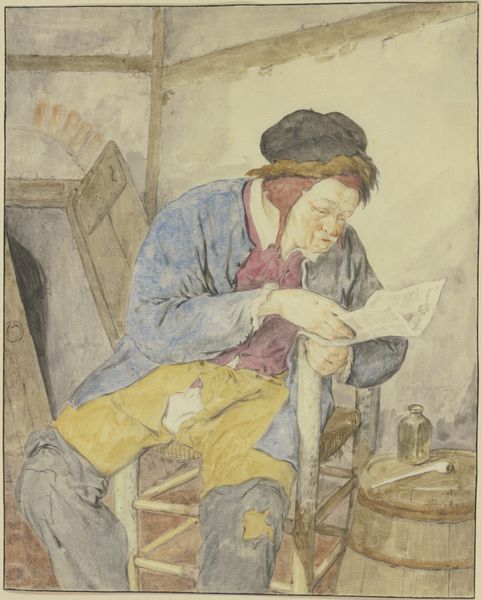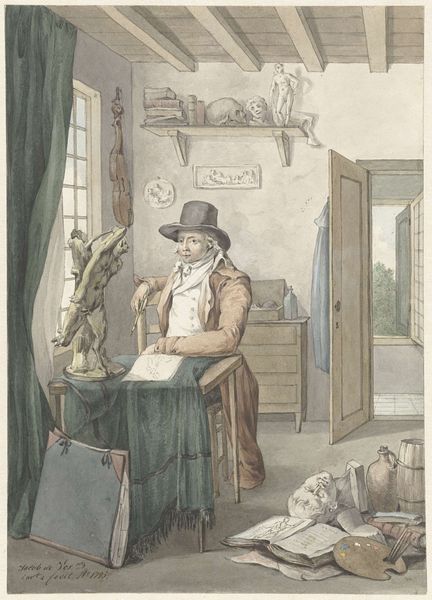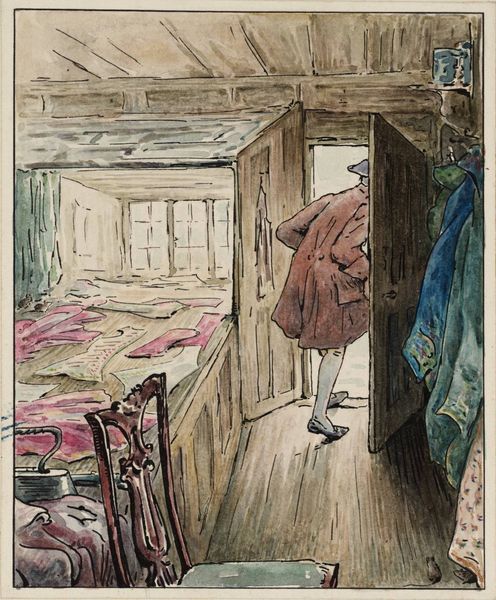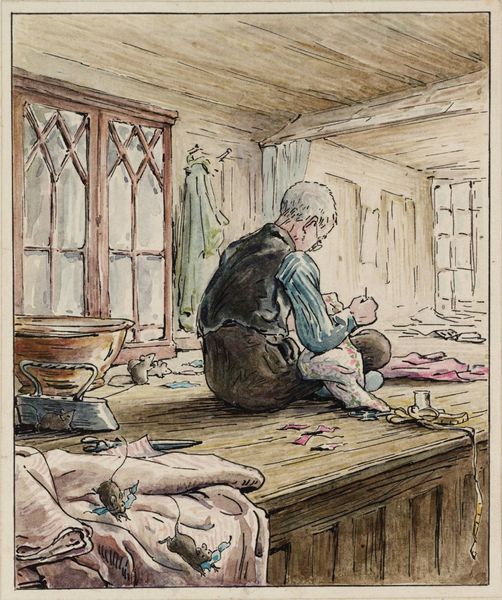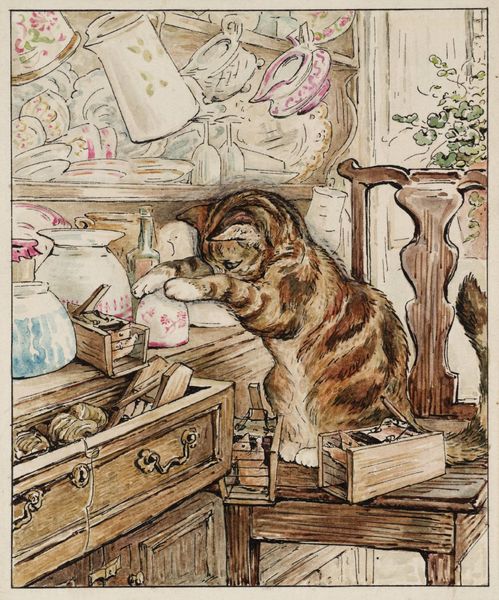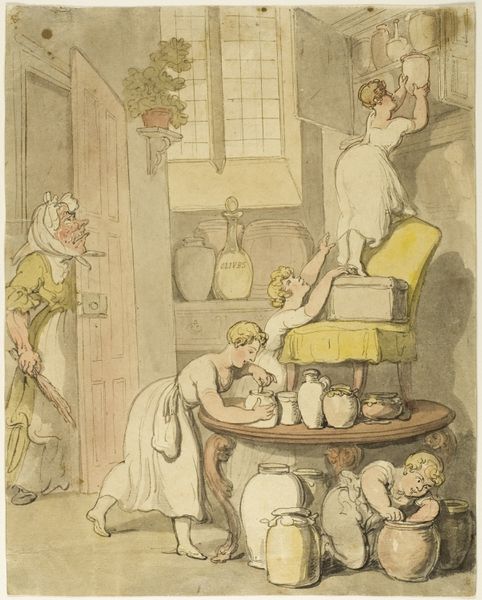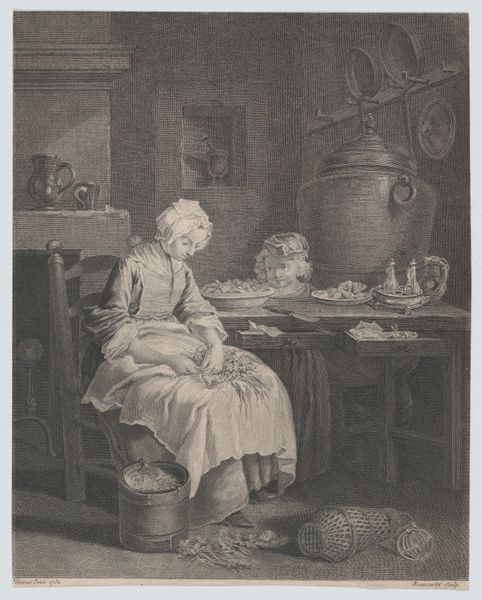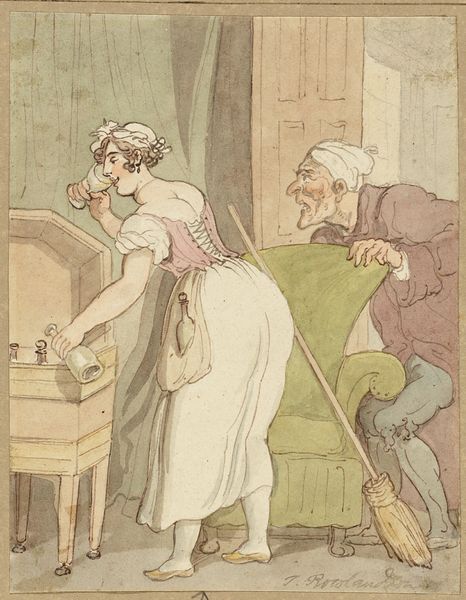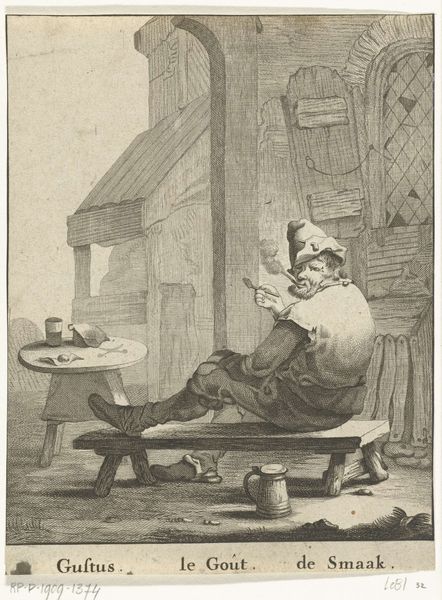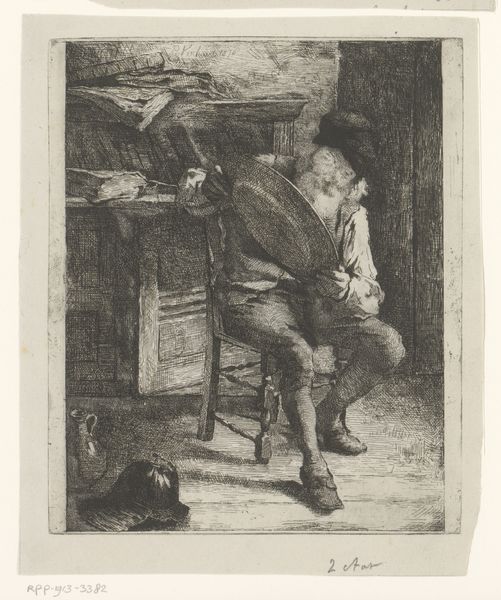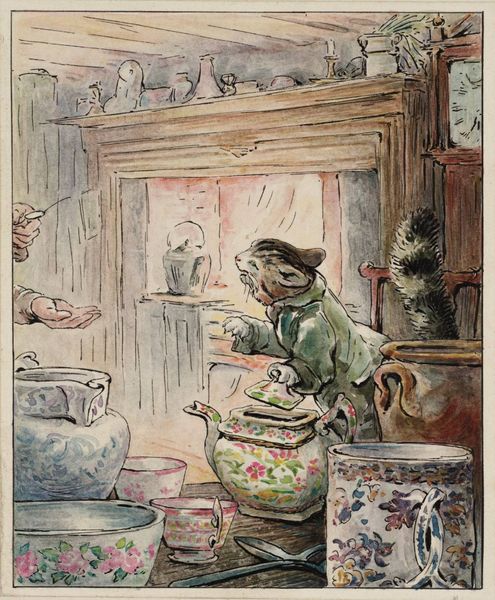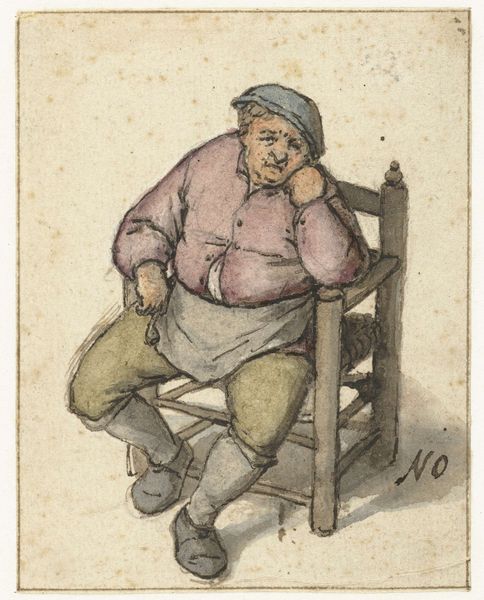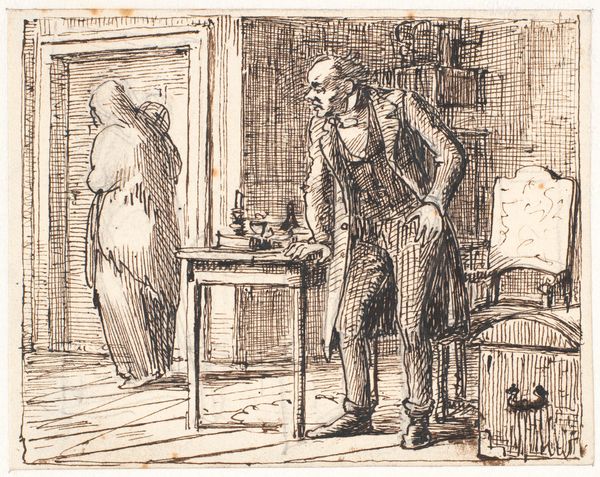
drawing, watercolor
#
drawing
#
arts-&-crafts-movement
#
landscape
#
figuration
#
watercolor
#
coloured pencil
#
watercolour illustration
#
mixed media
#
watercolor
Copyright: Public domain
Editor: So, here we have Beatrix Potter’s "The Tailor Hears Noises," made around 1902. It’s a watercolor and ink drawing and, honestly, it makes me think of a stage set, everything slightly askew, especially the looming grandfather clock. What jumps out at you about this piece? Curator: What strikes me is the clear delineation between labor and domesticity. Potter's careful rendering of the tailor’s tools, scattered haphazardly on the floor, contrasts sharply with the ordered, almost overflowing display of domestic wares. Notice the explicit staging of class distinctions here: tools are prostrate; wares are high-piled. It seems an implicit social critique embedded in what we’re meant to see as mere children's illustration. What kind of narrative around "good" housekeeping does this arrangement enforce, if we consider labor a lesser occupation? Editor: I hadn't considered the positioning of the objects as commentary, but you're right. The disarray versus the order really highlights that. Do you think her use of watercolor plays into that idea at all, considering it can be seen as a ‘less serious’ medium? Curator: Precisely! Watercolor, so often associated with amateur artistry or, pejoratively, "craft," further blurs lines between high and low art. The transparency of the medium allows us to see the layered construction—revealing her artistic labor. We should question: What makes "high" art more valid? What's more *valuable* about oil on canvas than an illustration, or the implements used for labor? Editor: It’s amazing to think about how something seemingly so quaint could be so rich with implications about class and the value we place on certain types of work. I definitely have a new perspective now! Curator: Indeed! By carefully examining the materials and their presentation, we can expose those very material inequalities and prejudices embedded within even the most unassuming images.
Comments
No comments
Be the first to comment and join the conversation on the ultimate creative platform.
